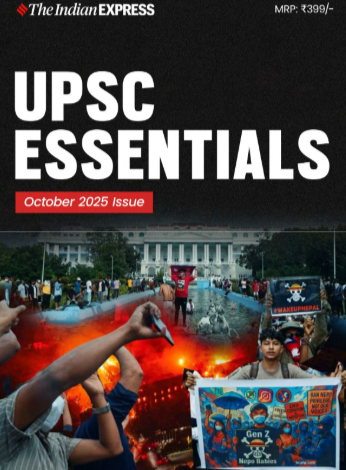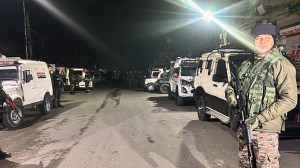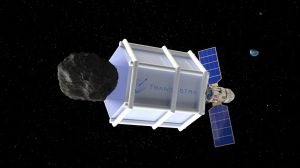
Why in the news?
Kanichar — 60 km from Kannur — is India’s first village panchayat where a living lab approach has been adopted for enhancing climate sensitivity and people’s resilience capacity. For the village, which saw three people being killed and 36 hectares of farmland being destroyed in a series of landslides in 2022, this has come as a relief.
Story continues below this ad
Key Takeaways:
1. The living lab approach is an ecosystem that integrates real-world settings with research and innovation to create and test solutions. First developed in the Netherlands, the approach is marked by the involvement of several stakeholders — including government, experts, private agencies and civic society — to find real-world solutions.
2. It is implemented by the Kerala State Disaster Management Authority (KSDMA) with the one aim — making the 4,600-odd household owners in the panchayat resilient to natural disasters.
3. The living lab approach has made the people familiar with standard operating procedures, emergency support system, exit routes, along with vulnerabilities. Hyperlocalisation means that alerts – and responses – are tailored to suit the needs of the place.
4. All the households are provided with a link to collect the weather data — mainly on rainfall, speed of the wind and temperature. People who check the data share the information with others through ward-level WhatsApp groups.
Story continues below this ad
5. The village currently has one automatic weather station to provide local weather data in the landslide-prone panchayat, with authorities now planning a dozen more in the panchayat’s 13 wards.
6. According to the World Meteorological Organisation, an automatic weather station (AWS) is a meteorological station at which observations are made and transmitted automatically. The normal AWS consists of these four sensors – Wind sensors, temperature humidity sensors, pressure sensors and rainfall sensors.
 An automatic weather station installed to provide local weather data in the landslide-prone area. (Express Photo)
An automatic weather station installed to provide local weather data in the landslide-prone area. (Express Photo)
7. The panchayat will also soon have an early landslide warning system. Developed by IIT-Roorkee in association with the CSIR-Central Building Research Institute (Roorkee) and slated to be installed next month, the system will have indigenously developed sensors to gather input from the ground and an Artificial Intelligence/Machine Language model for the landslide early warning system.
8. Early warning systems (EWS) involve predicting landslide likelihood, disseminating information and enabling timely response. These can be region-specific or target individual slopes.
Story continues below this ad
9. India has done well to prepare and safeguard itself against certain natural events such as cyclones, but landslides remain a weak point. Notably, on the initiation of the Geological Survey of India (GSI), the National Landslide Forecasting Centre was launched in July 2024, which is an important step in disaster resilience for landslides.
BEYOND THE NUGGET: Landslides and India’s prone to them
1. Landslides are natural phenomena that usually occur in mountainous regions with steep slopes. During a landslide, large amounts of rock, boulders, loose mud, soil, and debris roll down slopes and hillsides, gathering great momentum and often taking vegetation or buildings along.
2. With a steady rise in the number of extreme weather events, especially heavy rainfall capable of triggering landslides and floods, the Indian Space Research Organisation (ISRO) released the “Landslide Atlas of India” in 2023. Landslides mapped in the ISRO atlas are mainly event-based and season-based.
 Districts with landslide risk exposure (Landslide Atlas of India, ISRO)
Districts with landslide risk exposure (Landslide Atlas of India, ISRO)
3. Excluding snow covered areas, approximately 12.6 per cent of the country’s geographical land area (0.42 million sq km) is prone to landslides. As many as 66.5 per cent of the landslides are reported from the North-western Himalayas, about 18.8 per cent from the North-eastern Himalayas, and about 14.7 per cent from the Western Ghats.
Story continues below this ad
4. In July 2019, NDMA launched the LRMS to provide financial and technical support to landslide-prone states for site-specific landslide mitigation. The LRMS is a pilot scheme to demonstrate the benefits of landslide treatment measures by application of dierent methods of slope stabilization, along with landslide monitoring, awareness generation and capacity building/training, etc.
5. The National Landslide Risk Management Strategy was released on 27th September, 2019. This strategy addresses all the components of landslide disaster risk reduction and management, such as hazard mapping, monitoring and early warning systems, awareness programmes, capacity building and training, regulations and policies, stabilization and mitigation of landslides, etc.
Post Read Question
Consider the following statements:
1. The ‘Living lab’ approach was first developed in Kerala.
2. It is an ecosystem that integrates real-world settings with research and innovation to create and test solutions.
3. The National Landslide Forecasting Centre has been established through the 12th Five-Year plan to provide an early warning system for landslides.
Which of the statements given above are incorrect?
(a) 1 and 2 only
(b) 1 and 3 only
(c) 2 and 3 only
(d) 1, 2 and 3
Story continues below this ad
(Sources: In Kerala village, ‘living lab’ provides local weather forecast, landslide alert, UPSC Issue at a Glance | Landslides : 5 Key Questions You Must Know for Prelims and Mains, imd pune, Explained: The danger from landslides, with several dead in Northeast India after cyclone Remal)
Subscribe to our UPSC newsletter. Stay updated with the latest UPSC articles by joining our Telegram channel – IndianExpress UPSC Hub, and follow us on Instagram and X.
🚨 Click Here to read the UPSC Essentials magazine for August 2025. Share your views and suggestions in the comment box or at manas.srivastava@indianexpress.com🚨



 An automatic weather station installed to provide local weather data in the landslide-prone area. (Express Photo)
An automatic weather station installed to provide local weather data in the landslide-prone area. (Express Photo) Districts with landslide risk exposure (Landslide Atlas of India, ISRO)
Districts with landslide risk exposure (Landslide Atlas of India, ISRO)






























